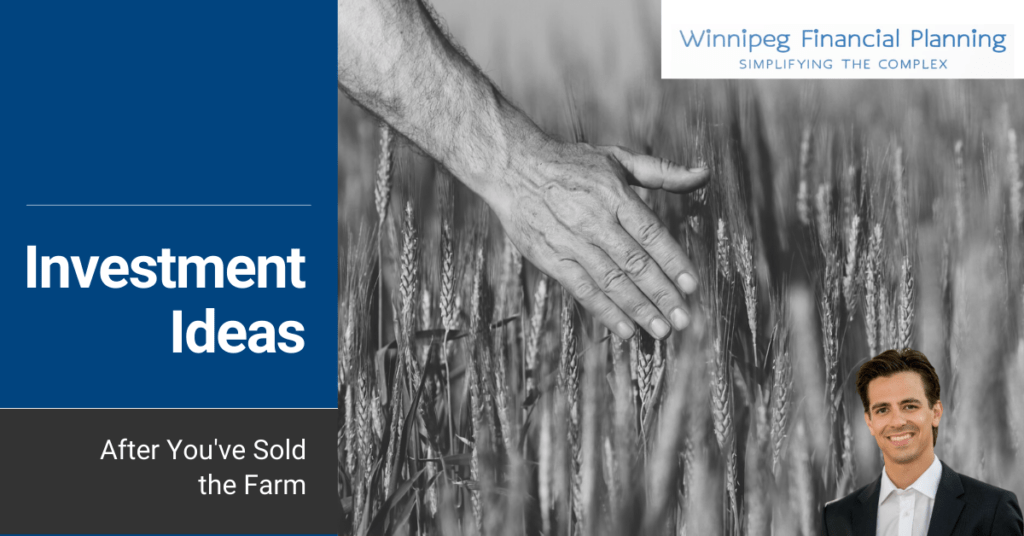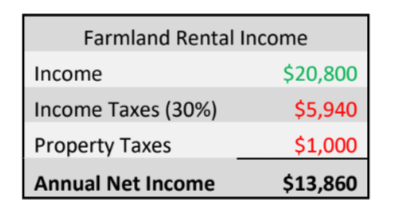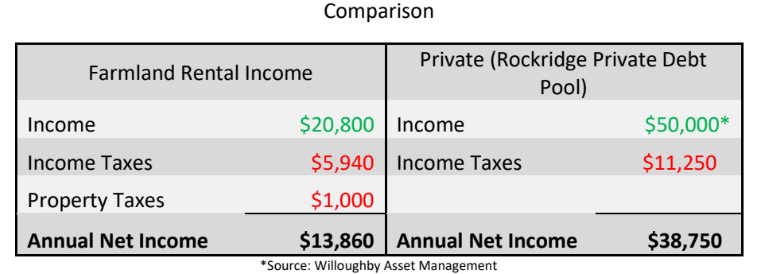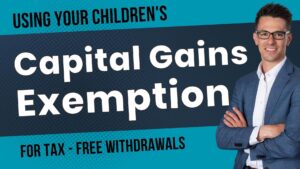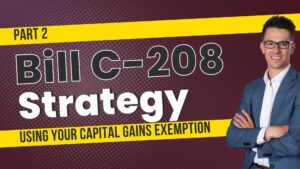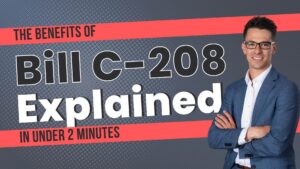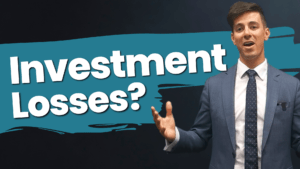I often receive these types of calls after a farm is sold:
- What can I invest in that’s going to give me a reasonable rate of return?
- What can I invest in that is safe?
- What can I invest in that’s going to match the farm rent I was receiving?
There are unlimited options to consider, and the answer always depends on what you are looking to accomplish with your sale proceeds. But to help you get started, I have put together some ideas for you to consider.
I have tried to keep it simple by comparing different investments to the one asset you understand like no other – Farmland.
Farmland Rental Income
Let’s first build out a farmland rental scenario that we can compare to different investments.
Assumptions:
- Quarter section valued at $1,000,000 ($6,250/acre)
- Rental income per year is $20,800 ($130/acre)
Now let’s see how this compares to different investments.
GICs (Guaranteed Income Certificates)
Risk: Very Low
Income: Very Low
Growth Potential: None
Tax Treatment: Poor
Expected Rate of Return: 1% to 2%
Bonds
Risk: Low
Income: Low
Growth: Low
Tax Treatment: Poor
Expected Rate of Return: 1% to 5%
Private Investments
Risk: Low-Medium
Income: Medium
Growth Potential: Low
Tax Treatment: Good
Expected Rate of Return: 4% to 6%
Blue-Chip Dividend Paying Stocks
Risk: Medium
Income: Medium
Growth Potential: Medium
Tax Treatment: Good
Expected Rate of Return: 3% to 5%
Keep in mind, I have not taken into consideration the potential growth of these investments, I am only looking at it from an annual income perspective. For example, even though a GIC would provide you with a higher annual income when compared to farm rental income, I believe farmland is still a better investment because of its potential growth. See my past post – Is Farmland a Good Investment.
Build a Portfolio
Although I have gone over individual options today, just like farming, it makes sense to diversify your crops and not go all-in on one strategy.
A couple of years ago, I put together a short video, showing farmers how to build an investment portfolio and combine some of the pieces I’ve discussed today: Investing after you’ve sold the farm.
As always, if you’d like to chat, I’m only a phone call away: Book Phone Call.

